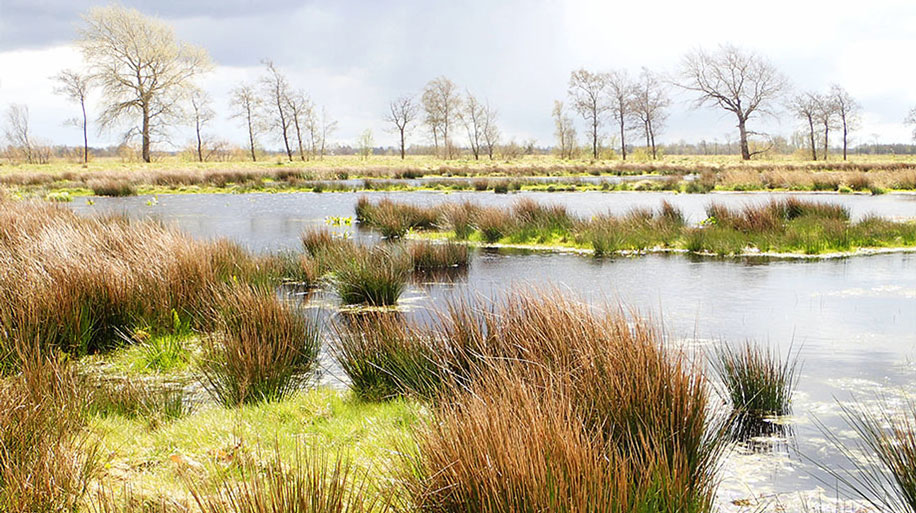Eurowings is offering carbon offsets for projects in Germany for the first time. The two new climate protection projects are the Königsmoor near Hamburg where Eurowings is the largest airline and the “Gelliner Bruch” moorland in Mecklenburg-Vorpommern.
The voluntary offsetting is organized through Swiss non-profit climate protection organization company Myclimate as well as with local sustainability organizations, and are certified in accordance with the recognized Moor Futures project standard, while all other Eurowings compensation offers bear the premium “Gold Standard” seal of approval.
Offsetting while booking a flight has been made easier on the Eurowings website, and contributions finance Moor Futures certificates, with private individuals, companies or institutions participating in the financing of the implementation of the projects through the offsets. Travellers who have opted for carbon compensation for their flight will receive proof of their compensation in the booking confirmation.
The carbon offset project standard Moor Futures was established in 2012 as the world’s first carbon certificates for rewetting moorland by the three moorland-rich German states of Mecklenburg-Western Pomerania, Brandenburg and Schleswig-Holstein in a partnership. The implementation of the project and the scientific monitoring of the impact on the climate is coordinated and financed by Ausgleichsagentur Schleswig-Holstein, a full subsidiary of the Stiftung Naturschutz Schleswig-Holstein
“Our passengers can now combine carbon-neutral travel with support for regional compensation projects in a very simple way,” saidEurowings CEO Jens Bischof.
More details on the two projects, as well as others worldwide, are available on the Eurowings website.
Both of the German projects involve restoring moorland. The following information is from the Myclimate website….
“More than 95 per cent of all high and lowland moors in Germany were drained through the digging of canals and ditches throughout the 20th century and used for agriculture or forestry or their peat was mined as a cheap source of fuel. The cultivation of the moorland exposed the stored carbon in the soil which continuously oxidises in the atmosphere. With more than 40 million tonnes of CO₂ released annually, drained moorland soil is responsible for 40 per cent of all agriculture-related greenhouse gas emissions in Germany. Through rewetting, typical upland moor vegetation can develop over the long term, helping to efficiently capture CO2 and create a valuable habitat for many endangered species.”
Konigsmoor
“The areas in the Königsmoor were acquired by the Stiftung Naturschutz Schleswig-Holstein (a foundation for nature conservation) and were switched from an intensive to an extensive management without the use of fertilisation. For a complete renaturation, all ditches and drainages in the moor must be closed and flatwalls made from peat must be constructed to keep the rain water, which is then stored in the peat, inside the moorland, keeping the moor wet throughout the year.”
“Gelliner Bruch” moorland
“The Gelliner Bruch moorland in Ramin district, not far from the German-Polish border in Mecklenburg-Western Pomerania can be restored to its natural state. This will result in a significant decrease in the quantity of greenhouse gases emitted into the atmosphere. However, it’s not just the climate that will benefit but biodiversity, too, especially the local bird-life, since marsh and wetlands are crucial areas for them to shelter and breed in.”
“Well into the 1970s, the thickness of the peat mass in the north-eastern part of the Gelliner Bruch measured up to seven metres. Moors form over millennia from the remnants of dead plants, which do not completely decompose as a consequence of oxygen deprivation. This results in the continuous formation of peat – on average, the peat mass grows about 1mm per year, this means that in the case of the Gelliner Bruch it has been growing for more than 7,000 years. This changed in the 1970s, when the Gelliner Bruch was drained using pumps and ditches and intensively farmed for use as pasture. As a consequence of the draining, the peat mass was decimated and the moor’s soil bed sunk. The rewetting project saw pumps decommissioned, drainage ditches filled and old water inflows restored. Thanks to the carbon offset project, the advancing peat extraction was halted so that the peat layer of the Gelliner Bruch could become a store of carbon once again and no longer a source of greenhouse gases.”


